"Ships and boats and boats and ships." Naval war in the Pacific, WWII.
Don't wanna be here? Send us removal request.
Text
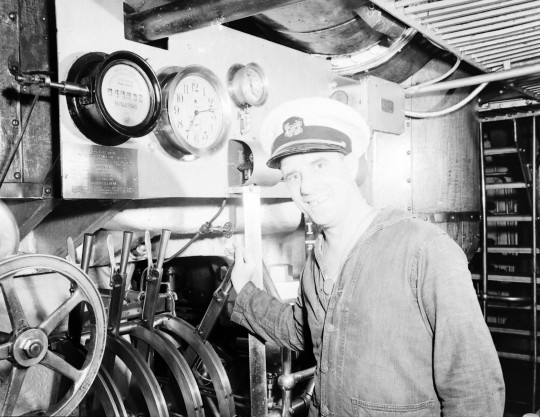

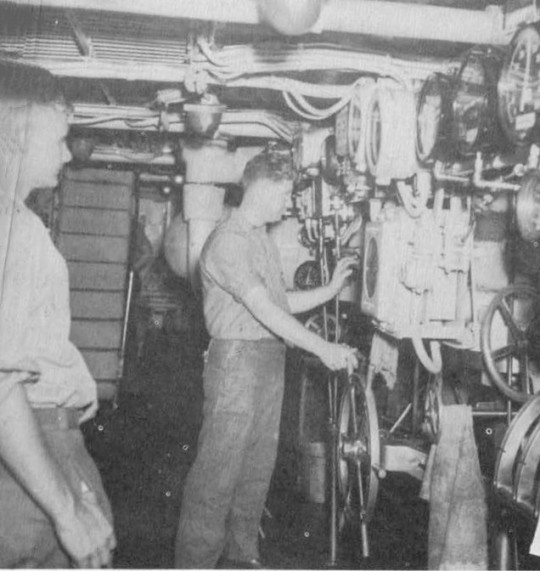
Engine room answers orders from the bridge to increase speed aboard USS NEW YORK (BB-34).
The first two photos were taken by Frank Scherschel of Life Magazine. Identified by Peter DeForest.
Photographed sometime between 1942 and 1945.
LIFE Magazine Archives: 1155772549, 1155773531
United States Navy, "The history of the U.S.S. New York, BB-34" (1945). World War Regimental Histories. 162. https://digicom.bpl.lib.me.us/ww_reg_his/162
93 notes
·
View notes
Text
Battleship Texas Foundation needs your help!

The folks at the Battleship Texas Foundation are doing everything they can to keep her afloat and preserve her for future generations but they can't do that without support from you.
If you wish to help fund the maintenance and restoration of battleship TEXAS, you can donate directly to her on the Battleship Texas Foundation website: link
If you live nearby and would like to volunteer, you can find that information here: link
Every little bit helps. Thank you to everyone who has contributed to her ongoing repairs.
To help with my research, please donate to my Patreon page: link
To see and read more about battleship TEXAS, these links will take you to the glossary of different topics: link, link
171 notes
·
View notes
Text


On February 19, 1945, "the landings at Iwo Jima began. Here's one of USS TEXAS (BB-35) crew member's account of what he saw that day.
'The day of the invasion, we appeared on the real landing beach and lowered our main battery guns right onto the shore and just blasted the entire area, trying to clear away where the landing took place. The most amazing thing without a doubt, after we lowered our main battery and 5-inch 51s and fired right straight into shore, we were no more than three quarters to a half a mile away from shore. And to see the devastation that the 14-inch guns would cause when they hit the shoreline, and the swaths that they would cut through the coral and the sand beach, I just didn't think anything could live and stand that kind of punishment. However, when we stopped firing and the landing craft passed our ship and went into the beach, we actually saw tanks, these old Japanese, looked like to me World War I vintage tanks, come lumbering down the hillside there to meet the landing craft and the Marines that were coming ashore. I couldn't believe that that could occur. It just, still in my mind, shocked me.' -Enever Limerick"
Post on the Battleship Texas Foundation Facebook page: link
U.S. Naval History and Heritage Command: NH 104204
83 notes
·
View notes
Text
There was the Martin T3M, before they were replaced by the T4M.
@lonestarbattleship I can’t for the life of me find the first aircraft types operated by US aircraft carriers, just what they operated right before WW2, can you help me out?
51 notes
·
View notes
Photo

“A U.S. Navy cameraman gets down low to shoot footage of an F4U Corsair for the training film “Assembly and Loading of Airborne Forward-Firing Rockets” at Naval Air Station Twenty-Nine Palms, CA.”
(NHHC: 2015.22.126)
539 notes
·
View notes
Text
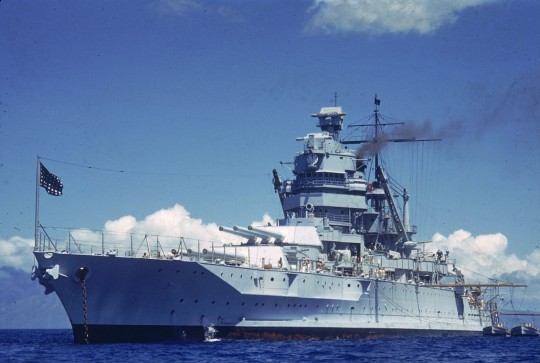


USS Idaho (BB-42) at anchor near Hawaii, during Fleet Ops, in October 1940.
Photographed by Carl Mydans of LIFE Magazine.
LIFE Magazine Archives: 1268438, 1268468, 1268444
212 notes
·
View notes
Photo
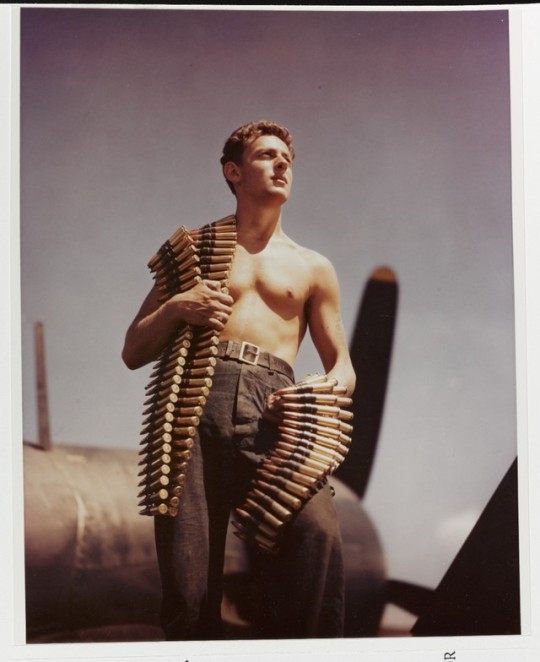
Aviation Ordnance man N.F. Nitishin carries belts of 50 cal. machine gun ammunition, as he prepares to arm the guns of a Vought F4U-1 Corsair fighter at a Pacific Base, circa 1944-45. Note bullet mix of one tracer (red nose) round to four armor-piercing (black nose).
(NHHC: 80-G-K-14567)
366 notes
·
View notes
Note
Can you talk about ships with solid service histories that were used as targets in their later life? It's fascinating to hear the fates of some of our most gallant hulls

USCGC Campbell (WPG-32) sinking, following a Harpoon missile hit. 30 November 1984. (Image source)
USCGC Campbell (WPG-32)
I believe this final message transmitted from the ship would do a better telling of her story than any words of mine:
“UNCLAS //N05752// SUBJ: FINAL FAREWELL
1. I SERVED WITH HONOR FOR ALMOST FORTY-SIX YEARS, IN WAR AND PEACE, IN THE ATLANTIC AND PACIFIC. WITH DUTY AS DIVERSE AS SAVING LIVES TO SINKING U-BOATS, OCEAN STATIONS TO FISHERIES ENFORCEMENT, AND FROM TRAINING CADETS TO BEING YOUR FLAGSHIP. I HAVE BEEN ALWAYS READY TO SERVE.
2. TODAY WAS MY FINAL DUTY. I WAS A TARGET FOR A MISSILE TEST. ITS SUCCESS WAS YOUR LOSS AND MY DEMISE. NOW KING NEPTUNE HAS CALLED ME TO MY FINAL REST IN 2,600 FATHOMS AT 22-48N 160-06W.
3. MOURN NOT, ALL WHO HAVE SAILED WITH ME. A NEW CUTTER CAMPBELL BEARING MY NAME, WMEC-909, WILL SOON CONTINUE THE HERITAGE. I BID ADIEU. THE QUEEN IS DEAD. LONG LIVE THE QUEEN.”
609 notes
·
View notes
Photo
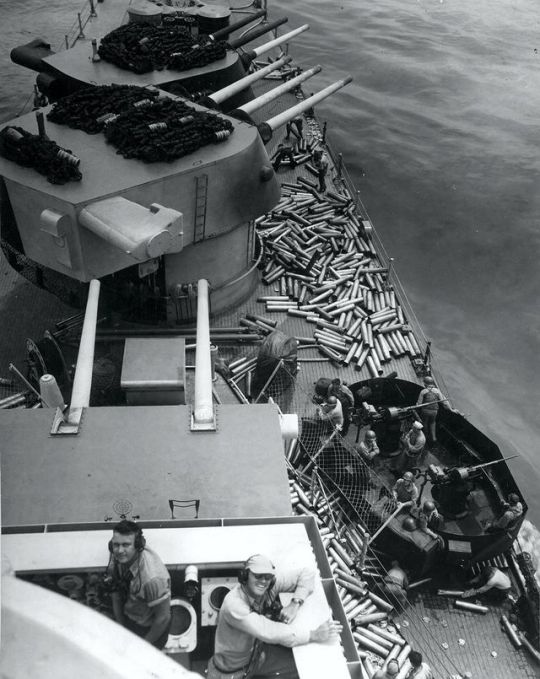
“USS Miami (CL-89)’s crew collects empty 6" shell casings after she shelled the Palau Islands on 7 September 1944.
Navy photo #80-G-284070, now in the collection of the US National Archives at College Park, Maryland.”
(Source)
1K notes
·
View notes
Photo
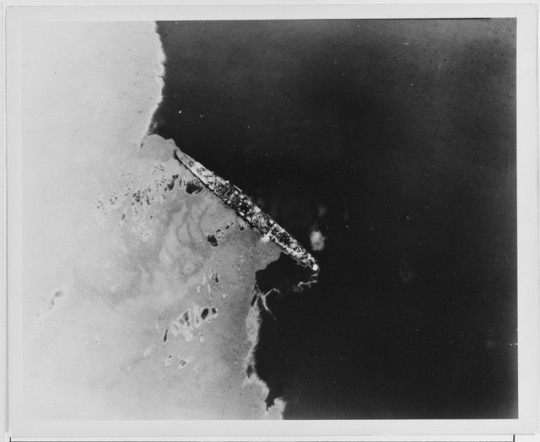
“Bleeding oil, Japanese light cruiser Yahagi lies dead in the water, helpless prey, for the coordinated U.S. bomber and torpedo attacks which plunged her to the bottom, circa 7 April 1945. Photo taken by USS Yorktown, #2458-3.”
(NHHC: NH 62416)
277 notes
·
View notes
Photo
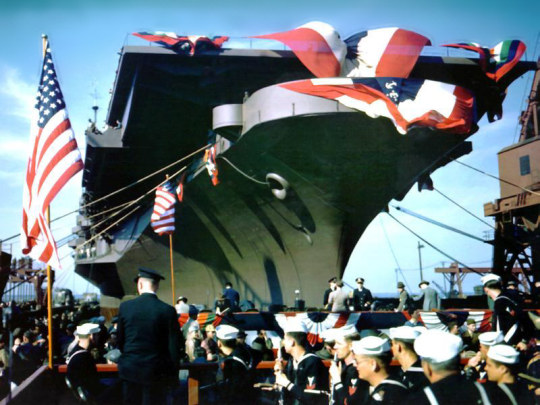
“USS Midway (CVB-41) ready for christening at the Newport News Shipbuilding and Drydock Company, Newport News, Va., 20 March 1945.”
(US Navy)
153 notes
·
View notes
Photo

“It was the morning of December 25, 1941, in Hong Kong. The sun shone bright and warm. Along the road bordered with blood-red flowers strolled a Canadian soldier, steel helmet perched on the back of his head and singing at the top of his voice. Fellow soldiers taking cover in the basement of a house shouted at him, “Take cover - get off the road!” The Canadian shouted back, “It’s a lovely day and it’s Christmas morning.” Then he picked up his song and continued to stroll along the road, to disappear forever.”
“Who he was, where he came from and what eventually happened to him, the survivors of the Winnipeg Grenadiers who had shouted out to him never did learn. But the unreality of this occasion - the casual, singing soldier strolling along, oblivious to the earth-shaking explosions or the hills of Hong Kong which at that moment were a mass of roaring flames - did not unduly amaze them. It was, so they thought, merely an appropriate part of the greater unreality which was the battle of Hong Kong itself. This does not mean that there was anything unreal about the savage fighting that had gone on for 18 days as 14,000 Canadian, British and Indian troops attempted to hold off 60,000 experienced, superbly trained Japanese troops. ”
- Toronto Star Weekly, 21 December 1961.
440 notes
·
View notes
Photo
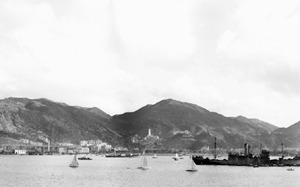

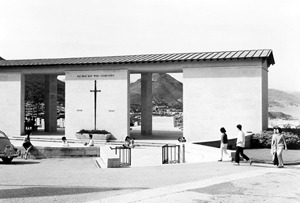
December 8th 1941: Battle of Hong Kong begins
On this day in 1941, during the Second World War, the Battle of Hong Kong began. The attack on the then British colony of Hong Kong began just hours after the Japanese attacked the American base of Pearl Harbor, marking the beginning of Japan’s quest for domination in Asia. The British government was sceptical of their chances of defending the outpost, but in September 1941 drafted Canadian troops to Hong Kong. The Battle of Hong Kong lasted 17 days, seeing heavy bombardment and fierce fighting, including a massacre at an Allied hostpital. The 12,000 Allied troops - comprising Canadians, Britons, Indians, and locals - were vastly outnumbered by the 50,000 Japanese. Ultimately, over 2,000 Allied troops died trying to defend Hong Kong, and the British governor surrendered on December 25th. The Japanese occupied Hong Kong until August 1945; after the war, the Japanese governor was executed for war crimes. The battle of Hong Kong remains an important moment in Canadian and Commonwealth history, for, despite overwhelming odds and little military training, the Allied forces refused to surrender, and many subsequently endured brutal conditions as prisoners of war.
75 years ago today
474 notes
·
View notes
Text
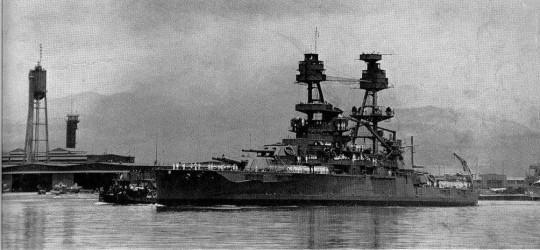
USS Nevada (BB-36) in Pearl Harbor, "during peaceful days prior to the blitz," circa fall 1941.
Note: the AA battery on the main top and the presence of boats on the "boat deck."
USS Nevada Cruise Book: link
100 notes
·
View notes
Photo

“USS Miami (CL-89)’s crew collects empty 6" shell casings after she shelled the Palau Islands on 7 September 1944.
Navy photo #80-G-284070, now in the collection of the US National Archives at College Park, Maryland.”
(Source)
1K notes
·
View notes
Text
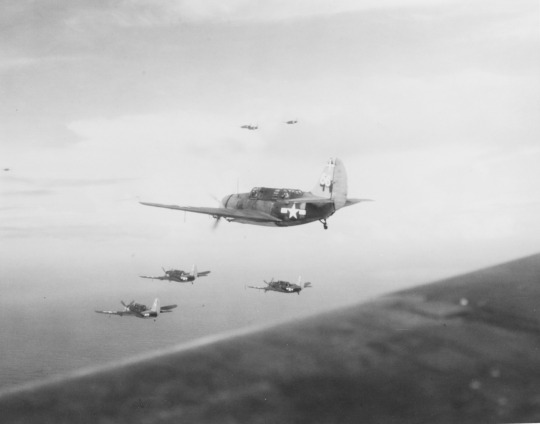
Curtiss SB2C-3 Helldivers of VB-18, assigned to USS Intrepid (CV-11), on patrol over the Philippine Sea, on November 15, 1944.
Note crudely repainted markings on tails.
NHHC: 80-G-K-2222
201 notes
·
View notes
Photo
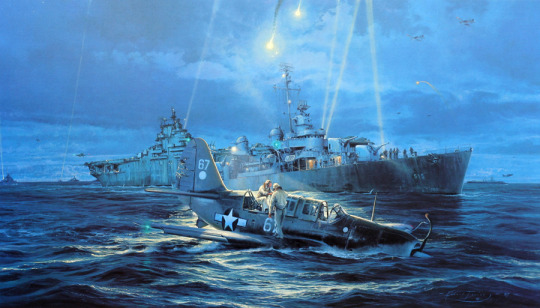
“In the foreground the SB2C Helldiver of Lieutenant Ralph Yaussi, its tanks dry, has ditched near the carrier USS Lexington. As Yaussi and his gunner James Curry clamber out of the sinking aircraft, the Fletcher class destroyer USS Anthony, her 24 inch searchlight ablaze, is moving in to make the pick-up. The chaos and confusion of that infamous night during the Battle of the Philippine Sea, springs back to life in this stunning painting.”
34 3/4″ x 23 1/2″
“Mission Beyond Darkness” by Robert Taylor.
287 notes
·
View notes